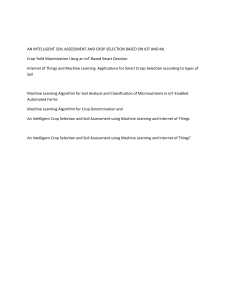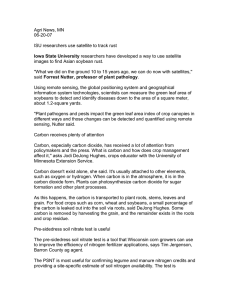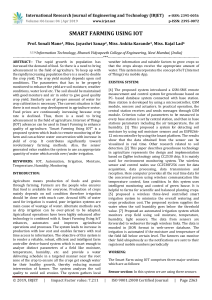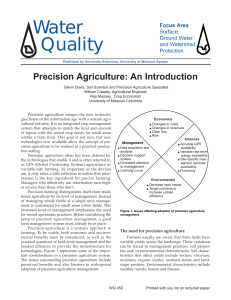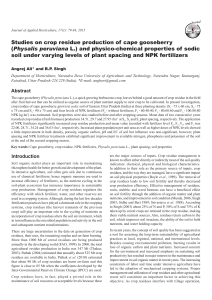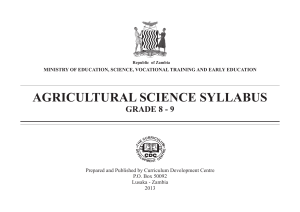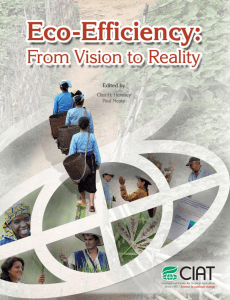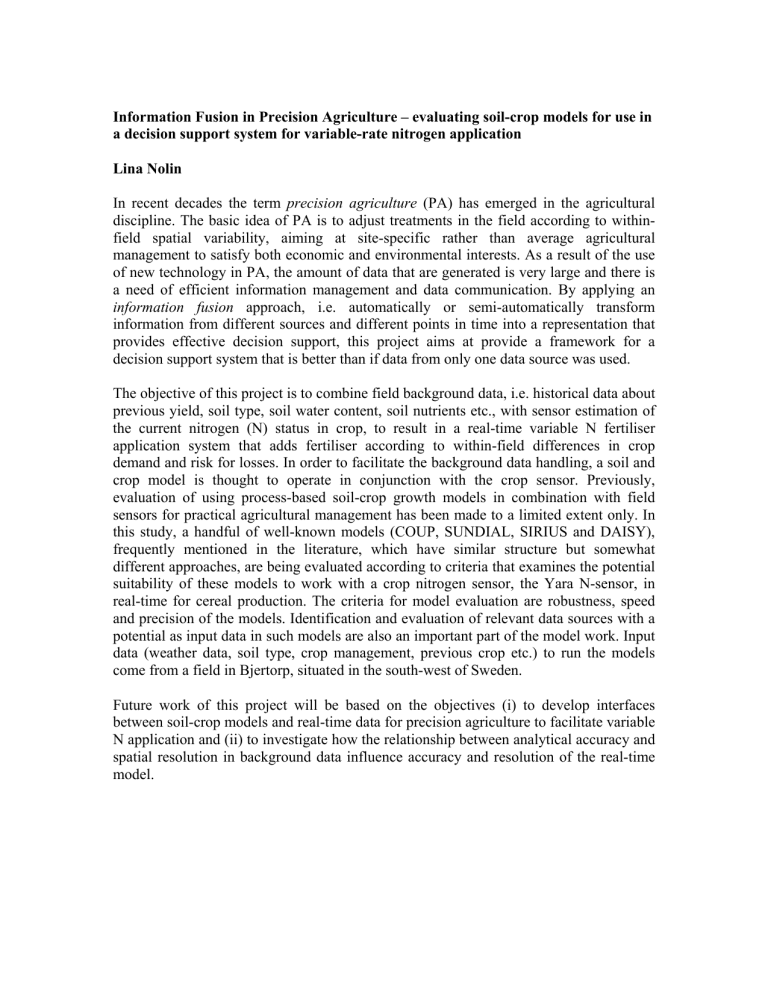
Information Fusion in Precision Agriculture – evaluating soil-crop models for use in a decision support system for variable-rate nitrogen application Lina Nolin In recent decades the term precision agriculture (PA) has emerged in the agricultural discipline. The basic idea of PA is to adjust treatments in the field according to withinfield spatial variability, aiming at site-specific rather than average agricultural management to satisfy both economic and environmental interests. As a result of the use of new technology in PA, the amount of data that are generated is very large and there is a need of efficient information management and data communication. By applying an information fusion approach, i.e. automatically or semi-automatically transform information from different sources and different points in time into a representation that provides effective decision support, this project aims at provide a framework for a decision support system that is better than if data from only one data source was used. The objective of this project is to combine field background data, i.e. historical data about previous yield, soil type, soil water content, soil nutrients etc., with sensor estimation of the current nitrogen (N) status in crop, to result in a real-time variable N fertiliser application system that adds fertiliser according to within-field differences in crop demand and risk for losses. In order to facilitate the background data handling, a soil and crop model is thought to operate in conjunction with the crop sensor. Previously, evaluation of using process-based soil-crop growth models in combination with field sensors for practical agricultural management has been made to a limited extent only. In this study, a handful of well-known models (COUP, SUNDIAL, SIRIUS and DAISY), frequently mentioned in the literature, which have similar structure but somewhat different approaches, are being evaluated according to criteria that examines the potential suitability of these models to work with a crop nitrogen sensor, the Yara N-sensor, in real-time for cereal production. The criteria for model evaluation are robustness, speed and precision of the models. Identification and evaluation of relevant data sources with a potential as input data in such models are also an important part of the model work. Input data (weather data, soil type, crop management, previous crop etc.) to run the models come from a field in Bjertorp, situated in the south-west of Sweden. Future work of this project will be based on the objectives (i) to develop interfaces between soil-crop models and real-time data for precision agriculture to facilitate variable N application and (ii) to investigate how the relationship between analytical accuracy and spatial resolution in background data influence accuracy and resolution of the real-time model.

